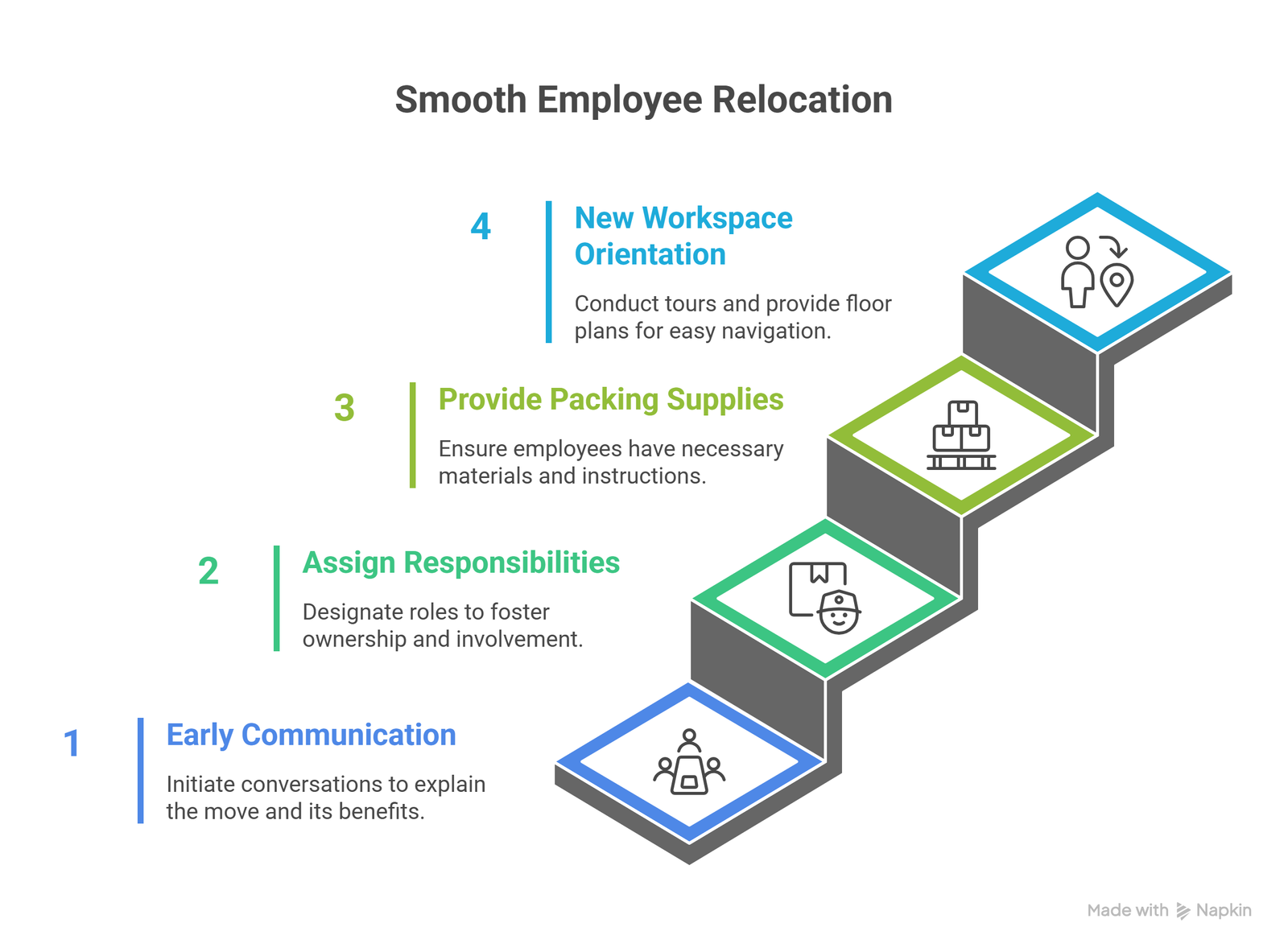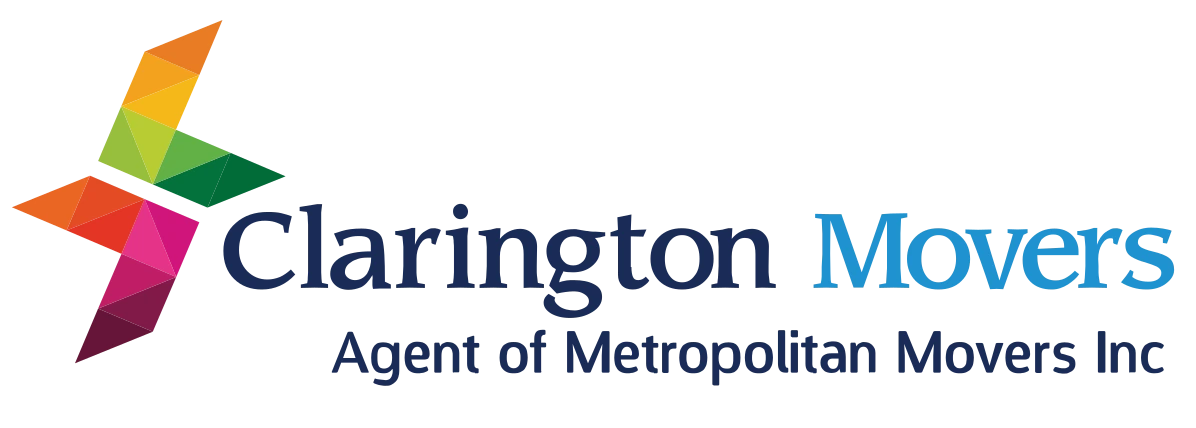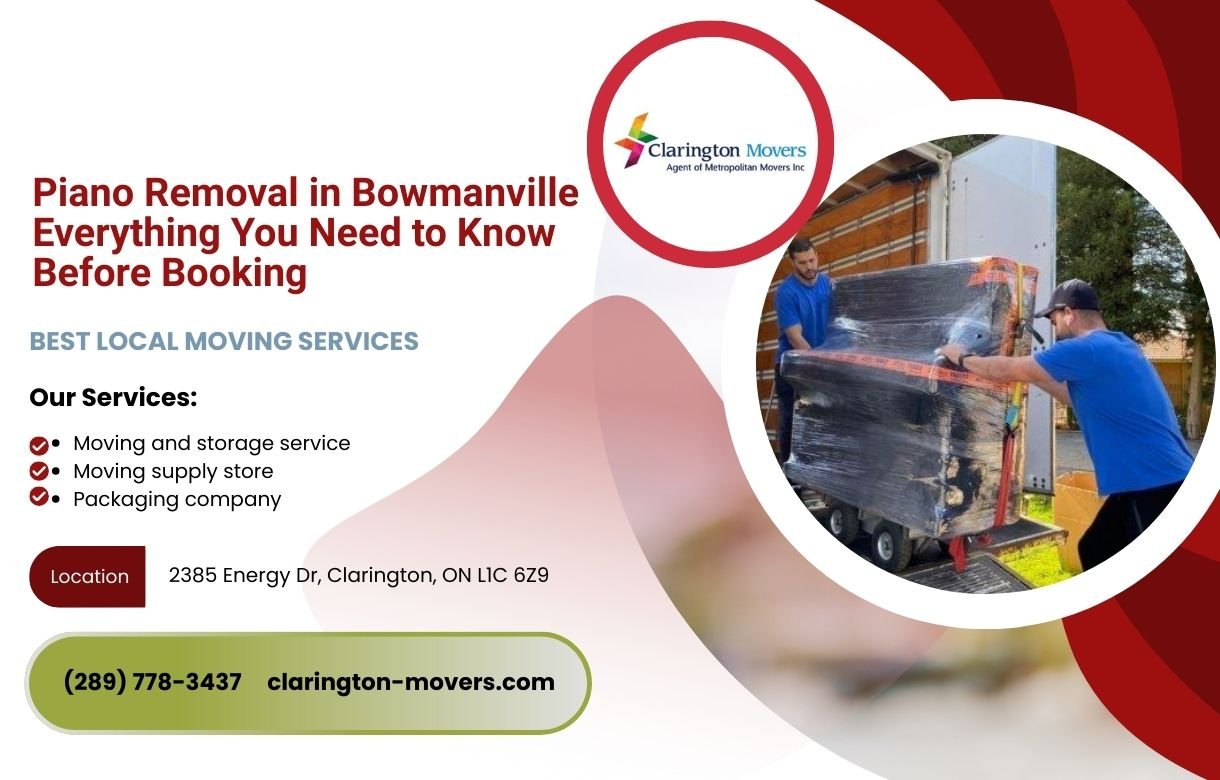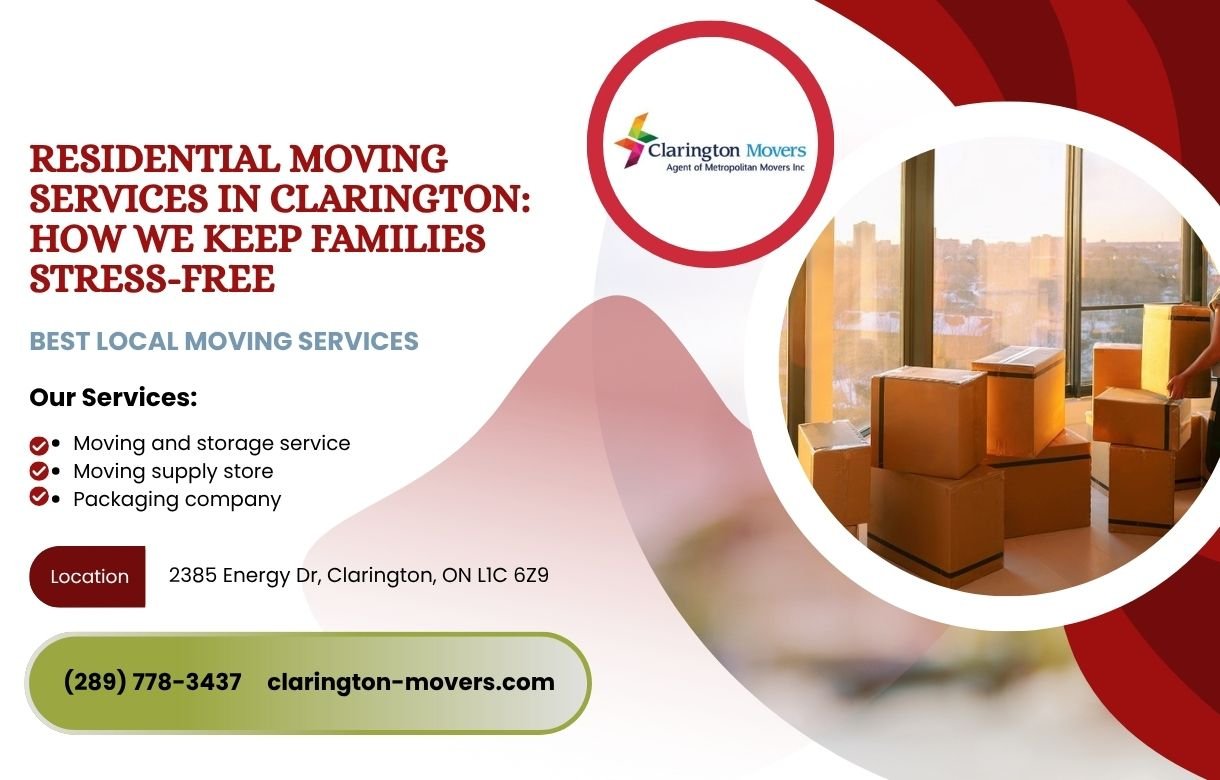How to Plan a Smooth Office Relocation in Clarington Without Disrupting Business
Relocating your business is a significant undertaking that requires careful planning, precise execution, and minimal disruption to daily operations. Unlike residential moves where a day or two of downtime is manageable, office relocations in Clarington, Bowmanville, Courtice, Newcastle, and throughout the Durham Region must balance the complexity of moving equipment, furniture, and sensitive documents with the critical need to maintain business continuity. Every hour of downtime translates directly into lost revenue, decreased productivity, and potential client dissatisfaction.
The challenges of commercial moves extend beyond simply transporting items from one location to another. Office relocations involve coordinating employees, managing IT infrastructure, handling confidential materials, and ensuring compliance with building regulations at both locations. Professional office relocation services in Clarington understand these unique demands and bring expertise that transforms potentially chaotic transitions into organized, efficient moves that keep your business running smoothly.
This comprehensive guide explores strategic planning and execution strategies for office relocations that minimize disruption while maximizing efficiency. From creating detailed timelines to coordinating with IT teams and communicating with employees, we’ll cover every aspect of successful commercial moves. Whether you’re moving a small startup or an established enterprise, these business moving tips will help you transition to your new workspace with confidence, maintaining productivity throughout the process and hitting the ground running in your new location.
Understanding the Unique Challenges of Office Moves
Office relocations present complexities that residential moves simply don’t encounter. Businesses must maintain operations, serve clients, and meet deadlines even while physical locations change. This requirement for continuity means downtime must be carefully planned, minimized, and communicated to all stakeholders including employees, clients, and vendors.
Technology infrastructure represents one of the most critical and delicate aspects of commercial moves. Servers, workstations, networking equipment, and phone systems require specialized handling and often need professional IT support for disconnection and reconnection. Data security during transport is paramount, as any breach could have serious legal and financial consequences. Unlike household items, you can’t simply pack computers in boxes and hope for the best.
Regulatory and insurance considerations add another layer of complexity. Commercial leases often have specific move-out requirements, building management may require certificates of insurance from moving companies, and certain industries face regulations about how confidential materials must be handled during relocation. Professional commercial movers in Clarington navigate these requirements routinely, ensuring compliance and preventing costly violations.
Employee coordination presents its own challenges. Staff need clear communication about timing, their roles in the move, and what to expect at the new location. Maintaining morale during transitions requires transparency and organization. When employees understand the plan and feel prepared, they become partners in the relocation rather than anxious observers wondering how the chaos will affect their work.
Creating a Comprehensive Office Relocation Timeline
Successful office relocations begin with detailed planning months before moving day. A comprehensive timeline ensures nothing is overlooked and everyone understands their responsibilities. Start planning at least three to six months ahead for small to medium offices, with larger operations requiring even more lead time.
The initial planning phase involves forming a relocation committee representing different departments. This team coordinates all aspects of the move, communicates with stakeholders, and makes key decisions. Having representatives from IT, facilities, HR, and management ensures all perspectives are considered and departmental needs are addressed.
Three to four months before moving day, finalize your new space lease, begin working with professional office movers in Clarington to obtain quotes, and start inventory processes. This is when you’ll measure doorways, elevators, and hallways at both locations to identify any access challenges that require special planning. Order new furniture, equipment, or technology infrastructure that will be needed at the new location, as lead times can be substantial.
Six to eight weeks out, notify clients, vendors, and service providers about your upcoming move. Update your business address across all platforms including your website, Google Business Profile, social media accounts, and business listings. Begin the process of changing utility services, internet connections, and phone systems to ensure minimal service interruption. Purge unnecessary files, equipment, and furniture during this phase to reduce what you’re moving.
The final month involves detailed preparation. Label everything clearly with department and destination locations. Back up all data comprehensively and store backups securely offsite. Create detailed floor plans for the new space showing where furniture and equipment will be placed. Pack non-essential items early, keeping only what’s needed for daily operations until moving day.
Minimizing Downtime During Your Office Move
Strategic timing significantly impacts how much business disruption occurs during your relocation. Many companies choose to move over weekends or holidays when business activity is naturally slower. While this typically costs more due to premium rates for weekend work, the ability to resume operations Monday morning often justifies the expense.
Phased moves offer another approach to minimizing downtime. Instead of relocating everything simultaneously, move departments or sections systematically over multiple days or weeks. This allows portions of your business to continue operating while others are in transition. IT infrastructure and essential services move first, getting set up and operational before other departments arrive.
Consider maintaining skeleton operations at the old location during the first days at the new space. Key personnel can handle critical client needs from the old office while the bulk of the company settles into the new location. This redundancy prevents complete service interruption during the most chaotic transition period.
Communication with clients about your move is essential. Provide advance notice about any potential service disruptions, even if you expect them to be minimal. Many clients appreciate transparency and will be understanding if they know changes are temporary. Some businesses find that formally closing for one or two days for relocation prevents the confusion of trying to operate in two locations simultaneously.
Protecting Sensitive Equipment and Documents
Office relocations involve items requiring special handling that residential moves typically don’t encounter. IT equipment, servers, and specialized machinery demand expertise beyond standard furniture moving. Professional commercial movers experienced with office relocations understand these requirements and bring appropriate equipment and techniques.
Servers and networking equipment need proper shutdown procedures coordinated with your IT department or managed service provider. These systems can’t simply be unplugged—they require systematic shutdown, careful disconnection documentation, secure transport in climate-controlled conditions, and proper reconnection at the new location. Any mistakes can result in data loss or extended downtime that severely impacts business operations.
Confidential documents and sensitive files require secure handling throughout the move. Use locked filing cabinets or sealed containers for documents that must remain confidential. Consider having trusted employees transport the most sensitive materials personally rather than including them with the general move. Shredding outdated confidential documents before moving reduces both security risks and moving volume.
Electronics like computers, printers, and phone systems need protection from shock and vibration during transport. Original packaging provides ideal protection, but professional movers have specialized containers and padding designed for electronics when original boxes aren’t available. Clearly label all cables and connections so IT staff can efficiently reconnect everything at the new location.

Employee Coordination and Communication Strategies
Clear communication with employees throughout the relocation process reduces anxiety and increases cooperation. Begin conversations early, explaining why the move is happening, what benefits the new space offers, and how the transition will be managed. Regular updates via email, meetings, or your company intranet keep everyone informed as plans develop.
Assign specific responsibilities to employees to create ownership and involvement. Designate “move champions” within each department who coordinate their team’s packing, answer questions, and serve as liaisons with the relocation committee. When employees feel involved rather than simply relocated, they become more engaged and helpful throughout the process.
Provide packing supplies and clear instructions well before moving day. Show employees what should be packed, what should stay accessible until the last day, and how to label boxes properly. Consider color-coding systems where each department uses specific colors for easy identification and sorting at the new location.
Plan for new workspace orientation once you’ve moved. Conduct tours of the new facility, show employees amenities like parking, lunch areas, and washrooms, and ensure everyone knows where their workstation will be. Having floor plans available digitally and posted throughout the new space helps everyone navigate during those first confusing days.
IT Infrastructure and Technology Considerations
Technology relocation requires specialized expertise that general moving companies may not possess. Partner with your IT department or managed service provider early in planning to coordinate technology aspects of the move. They need time to plan network setup, evaluate the new space’s technology infrastructure, and schedule their involvement in disconnection and reconnection.
Backup everything before the move—then backup again. Redundant data backups stored offsite protect against any disasters during relocation. Test backups to verify they’re complete and functional. This redundancy means even if something goes wrong during the move, your data remains secure and accessible.
Plan the new office’s technology layout before moving day. Where will servers be located? How will workstations connect to the network? What about phone systems and conference room technology? Having these details finalized means your IT team can hit the ground running rather than troubleshooting placement issues while your business waits to resume operations.
Consider upgrading technology infrastructure during the move. If your current systems are outdated or the new space offers opportunities for improvements, coordinate upgrades with the relocation. While this adds complexity, it’s often more efficient than moving old systems only to upgrade shortly after settling in.
Office Relocation Planning Checklist
| Timeline | Key Tasks |
| 6 Months Before | • Form relocation committee
• Obtain quotes from moving companies • Measure new space • Begin inventory • Plan budget |
| 3-4 Months Before | • Finalize moving company contract<br>• Notify landlords (old and new)<br>• Order new furniture/equipment<br>• Create detailed floor plans<br>• Start purging/decluttering |
| 6-8 Weeks Before | • Notify clients and vendors<br>• Update online business listings<br>• Arrange utility transfers<br>• Begin packing non-essentials<br>• Label everything systematically |
| 2-4 Weeks Before | • Confirm moving day details<br>• Backup all data (twice)<br>• Coordinate with IT team<br>• Pack remaining non-essentials<br>• Arrange parking/loading zones |
| 1 Week Before | • Final client communications<br>• Pack essential items<br>• Prepare employees for moving day<br>• Verify new space is ready<br>• Do final inventory check |
| Moving Day | • Supervise loading<br>• Do final walkthrough of old space<br>• Be available for questions<br>• Begin unpacking at new location |
| First Week After | • Unpack systematically by priority<br>• Test all systems<br>• Address any issues immediately<br>• Gather employee feedback<br>• Update remaining business materials |
Setting Up Your New Office for Success
Strategic unpacking and setup ensures you’re operational quickly at your new location. Prioritize by department and function—get essential operations running first, then move to secondary areas. IT infrastructure and reception areas typically need setup priority as they impact client interaction and business operations most directly.
Use your pre-planned floor plans to direct furniture and equipment placement during unloading. When movers know exactly where everything goes, unpacking becomes systematic rather than chaotic. This preparation prevents having to move heavy furniture multiple times because initial placement wasn’t well thought out.
Test everything as it’s set up rather than waiting until all unpacking is complete. Verify computers connect to networks, phones work properly, printers function, and conference room technology operates correctly. Identifying problems immediately allows for quick resolution before they impact business operations.
Create a punch list of items needing attention after the initial setup. Not everything will be perfect immediately—that’s normal. Having a systematic list ensures nothing is forgotten as you settle in. Assign responsibilities for addressing punch list items so they get resolved promptly rather than lingering indefinitely.
Why Choose Professional Office Relocation Services
Professional commercial movers bring expertise that dramatically reduces risks and stress associated with office relocations. They understand the unique challenges of business moves and have refined processes for handling everything from executive offices to warehouse facilities. Their experience means they anticipate problems before they occur and bring solutions you might not have considered.
Equipment and resources professional movers provide are essential for complex office moves. Specialized dollies for heavy equipment, protective materials for sensitive electronics, and properly sized trucks for efficient transport all contribute to successful relocations. Attempting an office move with inappropriate equipment leads to damage, delays, and frustration.
Insurance and liability protection offered by professional moving companies protects your business from financial losses if damage occurs despite best efforts. Reputable movers carry comprehensive commercial insurance specifically designed for business relocations. This protection gives you recourse if something goes wrong, whereas DIY moves leave your business bearing all risk.
Time efficiency professional movers provide is invaluable. What might take your employees days or weeks to accomplish, experienced moving crews complete in hours. This efficiency translates directly into reduced downtime and faster return to normal operations. Your employees can focus on their actual jobs rather than becoming amateur movers.
Specialized Services for Different Business Types
Different industries have unique moving requirements that benefit from specialized expertise. Law firms and financial institutions handling confidential client information need movers experienced with secure document transport and chain-of-custody requirements. Medical and dental practices require careful handling of specialized equipment and compliance with healthcare regulations regarding patient record security.
Technology companies and data centres face challenges around server relocation, network infrastructure, and sensitive electronic equipment. These moves often require partnerships between professional movers and IT specialists to ensure systems remain secure and functional. Even brief downtime can be extremely costly in these environments.
Retail businesses relocating need strategies that minimize lost sales days. This might involve setting up the new location completely before closing the old one, allowing a seamless transition with little to no closure time. Retail fixtures, inventory, and point-of-sale systems all require specialized handling.
For businesses throughout the Durham Region, our local moving services in Bowmanville, Courtice, Newcastle, Orono, and Oshawa provide experienced commercial moving support tailored to local business needs.
Post-Move Considerations
Once you’ve moved, the work isn’t quite finished. Conduct a thorough post-move evaluation to identify what worked well and what could be improved for future reference. Gather feedback from employees about the moving process and their new workspace. This information proves valuable if your business grows and relocates again.
Update all remaining business materials with your new address. Letterhead, business cards, promotional materials, and any printed materials with the old address need replacement. While you’ve updated digital presence already, physical materials require attention as you settle into the new space.
Host an open house or celebration at your new location. Invite clients, vendors, and community members to see your new space. This creates positive associations with the move and provides opportunities to strengthen business relationships. It also generates local publicity for your business in the new area.
Monitor operations closely during the first few weeks after moving. Small issues that seem minor initially can develop into larger problems if not addressed promptly. Be responsive to employee concerns about the new space and make adjustments as needed to ensure everyone can work effectively in the new environment.
Why Clarington Movers for Your Office Relocation
At Clarington Movers, we understand that your business can’t afford extended downtime or sloppy execution during relocation. Our team has extensive experience with commercial moves throughout the Durham Region, from small startups to established enterprises. We bring systematic processes refined through hundreds of successful office relocations.
Our corporate relocation planning begins with detailed consultation where we understand your business, your timeline, and your specific requirements. We create customized moving plans that address your unique challenges rather than applying generic solutions. This personalized approach ensures your move aligns with your business needs and minimizes disruption.
We’re fully licensed and insured with commercial coverage specifically designed for business relocations. Our team receives training in handling sensitive equipment, maintaining confidentiality, and working efficiently in corporate environments. We understand professional standards and conduct ourselves accordingly in your workplace.
From small businesses needing house-scale moving services to larger operations requiring comprehensive corporate relocation services, we scale our support to match your needs. Our local presence throughout Clarington and the Durham Region means quick response times and familiarity with local buildings, regulations, and logistics.
Frequently Asked Questions
How much does office relocation typically cost in Clarington?
Office relocation costs vary significantly based on office size, distance moved, equipment complexity, and services required. Small offices might spend between two thousand and five thousand dollars, while larger operations can range from ten thousand to thirty thousand dollars or more. Most professional movers provide detailed quotes after evaluating your specific situation. Factors affecting cost include number of employees, specialized equipment needs, weekend or after-hours moving, and whether you need packing services or handle that internally.
How far in advance should we book office movers?
Book office relocation services at least two to three months in advance, especially if moving during busy seasons or at month-end when many commercial leases turn over. Larger moves requiring extensive planning may need six months or more lead time. Early booking ensures availability on your preferred dates and provides adequate planning time for complex relocations. Last-minute bookings are sometimes possible but limit your options and may result in higher costs.
Can we move our office without any downtime?
While some downtime is typically unavoidable, strategic planning can minimize it dramatically. Weekend or holiday moves allow businesses to relocate when normally closed, resuming operations at the new location Monday morning. Phased moves where departments relocate systematically can maintain partial operations throughout the process. The key is working with experienced movers who understand business continuity needs and can execute efficiently within your timeframe.
What should we do with old office furniture and equipment?
Options include selling usable furniture and equipment, donating to charitable organizations, recycling through appropriate channels, or arranging disposal through your moving company. Many businesses find that selling or donating items they won’t need at the new location reduces moving costs while benefiting the community. Electronic waste requires proper recycling through certified e-waste facilities. Professional movers can often coordinate these services as part of your relocation package.
How do we maintain data security during an office move?
Maintain data security by backing up all information before the move, encrypting sensitive data, using locked containers for physical files, supervising loading and unloading of sensitive materials, and considering having trusted employees transport the most confidential items personally. Work with your IT team or managed service provider to ensure proper procedures are followed. Professional movers experienced with corporate relocations understand confidentiality requirements and can accommodate special security needs.
Ready for a Seamless Office Relocation?
Planning a smooth office relocation in Clarington requires expertise, coordination, and attention to detail that professional commercial movers provide. From protecting sensitive equipment to maintaining business continuity, every aspect of your move deserves careful consideration and expert execution. With proper planning and the right moving partner, your business can transition to a new location with minimal disruption and maximum efficiency.
At Clarington Movers, we specialize in office relocation services that keep your business running smoothly throughout the transition. Our experienced team understands the unique challenges commercial moves present and brings systematic solutions refined through years of successful corporate relocations. We work around your schedule, protect your equipment, and coordinate every detail so you can focus on running your business rather than managing logistics.
Don’t let the complexity of office relocation overwhelm you or disrupt your operations. Let our professional team handle the heavy lifting—literally and strategically. Contact Clarington Movers today at (289) 778-3437 or visit our contact page for a comprehensive consultation and detailed quote for your office relocation. Experience the difference that professional office movers make—your seamless business transition is just one call away!











